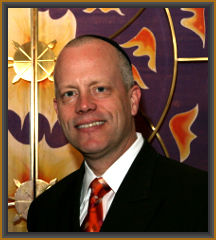
 |
June 24, 2022 (25 Sivan 5782) The Fringe Benefits of Being Jewish! Dear Holy Friends, I hope this note finds you doing well, in good health and good cheer, while enjoying the beginning of the summer. We warmly invite you to join us this Shabbat morning at 10:30am for our hybrid services, which will take place in-person in our sanctuary, as well as over our regular Zoom prayer link. This Shabbat we will honor the memories of Irving and Selma Kamil, as their family will sponsor the Kiddush in their beloved remembrance. While this week’s portion describes the well-known story of the twelve spies who Moshe sends to check out the Holy Land, I believe that the most significant ritual passage involves the mitzvah/commandment of wearing Tzitzit. In Numbers 37 we read, “Speak to the Israelite people and instruct them to make for themselves fringes on the corners of their garments throughout the ages; let them attach a cord of blue to the fringe at each corner. That shall be your fringe; look at it and recall all the commandments of the LORD and observe them, so that you do not follow your heart and eyes in your lustful urge. Thus, you shall be reminded to observe all My commandments and to be holy to your God.” For those of you who participate regularly in services, we often call up JCC Gesher president, Arnold G. to lead us in the paragraph leading up to the Shema. After reading a couple of paragraphs in English, he then instructs us that “for those wearing a tallit, please gather the four Tzitzit.” Interestingly, there are numerous customs regarding the gathering of the fringes, which I would like to share with you. Some gather no fringes. Sol Lieberman, of blessed memory, the leading Talmudist of our generations, suggested that the only sentence in the prayerbook that requires intentionality is the first line of the Shema. He did not want his students grappling to grab all 4 Tzitzit (not always an easy accomplishment) and be distracted before reading our primary statement of faith theology. Some hold only one fringe while reciting Shema. These folks base their preferred custom on the idea that the word Tzitzit has the numerical equivalent of 600 and that the 8 strings and 5 knots, in addition, bring us to the total of 613, which is symbolic of all the commandments in the Torah. Some gather only the front two fringes. These proponents note that each of the fringes have 8 strings and 5 knots, and therefore, by grabbing the front two fringes only, we reference 2x13, which equals 26 and is the numerical equivalent of God’s name in Gematria (י is ten, ה is five, ו is six and again ה is five, adding up to twenty-six). Some, like Arnold, gather all four fringes. This custom is based on the liturgical sentence leading into the Shema, which references the promise of HaShem to gather the Jews from all four corners of the Earth and to bring us to the Holy Land. So, should we gather zero Tzitzit, hold one strand, grab the front two, or challenge ourselves to bring together all four? If you are paying attention to the math and the design of your own Tallit, you may ask a question that I have also pondered for years. Is there logic to the idea of grabbing three? Last year, while teaching about the Mitzvah of Tallit, I directed this question to the students in one of my Talmud classes and challenged them to suggest a rationale for grabbing three. One student came back with this clever idea (even though there is no group that grabs three). He suggested that one could argue that holding three tzitzit corresponds to the three references of God in the first line of the Shema. Shema Yisrael Adonai (1) Eloheinu (2) Adonai (3) Echad. Personally, I loved his creativity! Whether you follow Arnold’s custom, Sol Lieberman’s custom, or your own, I would only offer that the idea of acknowledging the oneness of God, the importance of all the Mitzvoth, and the ingathering of the Jewish people, ultimately reminds us of the many “fringe benefits” of being part of a Holy People. Shabbat Shalom, Rabbi Eric Wasser, EdD, Hon.DM
|